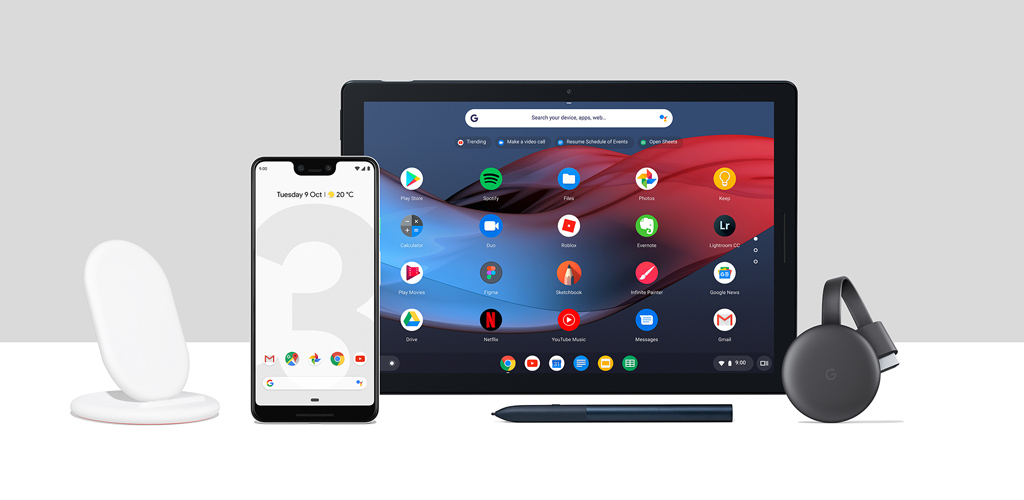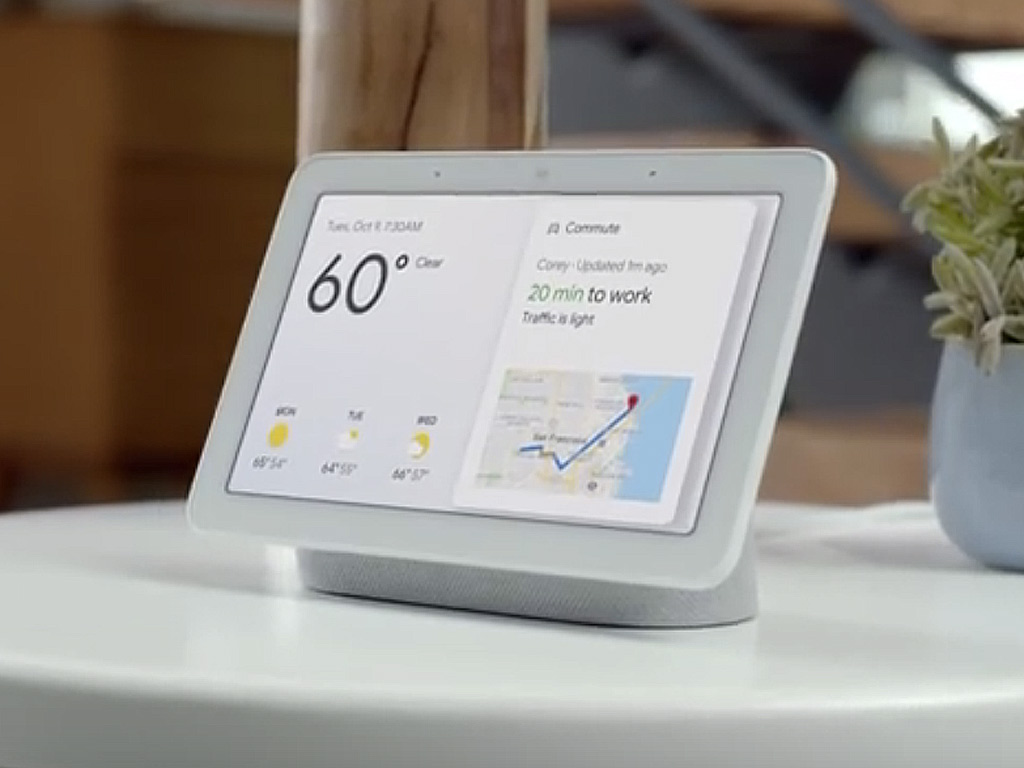
Google unveiled its latest batch of hardware products, with the Pixel 3, Pixel 3 XL, Pixel Slate and Home Hub rounding out an iterative upgrade across the board.
As much as new hardware was on display, Google’s presentation was just as much about software. Google Assistant will be getting smarter, as will your everyday Google search on a computer or mobile device.
![]()
New Pixel phones
As before, there are two new Pixel phones. The Pixel 3 has a 5.5-inch display (2160 x 1080), while the Pixel 3 XL has a 6.3-inch display (2960 x 1440). Both have an aspect ratio of 18:9, with front-facing speakers that are supposed to be 40 per cent louder than last year’s Pixel handsets. Google even threw in IP68-rated water-resistance and wireless charging for both, too.
Aesthetically, these phones don’t deviate a great deal from last year’s design. Screen sizes are certainly larger in both cases because of the slimmer bezels, though not quite the edge-to-edge elegance you see in other phones.
Of the two, the 3 XL has the notch at the top—the piece of the bezel that protrudes into the screen like a lip. Despite not having a notch, the Pixel 3 has the same two front-facing cameras its larger sibling does. One is a standard 8-megapixel f/1.8 shooter, while the other is an 8-megapixel f/2.2 wide-angle shooter for those selfies or group shots cramming more into the frame.
The rear, however, only features one lens—as it always has. But the features Google showcased should make photos really interesting. Top Shot is perhaps the most intriguing for its ability to capture still frames before and after you’ve actually snapped the shot. For those times you just missed the right moment, this mode looks to have you covered.
Night Sight looks to improve low-light and night shooting with smarter HDR to illuminate subjects naturally without using a flash. Playground uses augmented reality to superimpose virtual characters into the frame that interact with the subject. At launch, this will include Marvel superheroes, like the Avengers.
Call Screen also looks to be an interesting feature in that it will virtually take calls, asking for the caller’s purpose. The point is to weed out telemarketers without having to actually talk to them by providing a short transcript you can read in real-time. Google says this will start in the United States first before reaching other markets, like Canada.
Reviews for both phones are coming to the blog this month.
![]()
Pixel Slate
As a follow up to last year’s Pixelbook, the Pixel Slate is a 2-in-1 convertible tablet and computer built to be a productivity tool. It will run on Chrome OS, Google’s desktop operating system, and feature a 12.3-inch display (3000 x 2000).
Without getting too technical, the “Molecular Display” is really just a more efficient LCD screen that saves on battery life. Without proper testing, however, it’s hard to determine by just how much. Front-facing speakers blare out from the display, and Google claims they are noticeably louder than your average laptop.
Both rear and front-facing cameras are actually designed to take good photos and video. Unlike the Pixelbook, the Slate isn’t permanently attached to a keyboard (in fact, it’s going to be sold separately). It has two USB-C ports and a fingerprint scanner built into the power button to quicken logins. Notably missing? A headphone jack and memory card slot.
The internal specs will vary, as Google confirmed a handful of different spec options. It’s unclear which ones may be specific to certain markets, but in any case, they all run on Intel processors. The keyboard and Pixel Pen will still be sold separately, no matter what.
The keyboard has backlit keys, which is nice, and the magnetic flap in the back is designed to make it easier to adjust the screen’s angle. Without really testing all of this, it’s hard to gauge just how effective the Slate is as both a tablet and laptop. Stay tuned for more on that.

Google Home Hub
The latest Google Home device has a screen of its own. Home Hub, as Google is calling it, essentially plants a 7-inch display onto a flattened speaker. The combination is very much a slightly different take on the Amazon Echo Show, where smart home features have a visual component.
It is a touchscreen, so you don’t have to only interact by voice, but it’s not a full-fledged tablet. It’s not running a full version of Android where you can download apps and browse the web. Instead, Google built in native YouTube support to access videos by voice or touch.
Google even hinted that it’s trying not to position the Home Hub as an entertainment device. For one, the speaker faces back, not front, save for a small piece at the bottom that funnels audio forward. The previously-noted lack of access to apps and content also makes that pretty obvious.
Instead, the focus is to add some visual context to the smart home and virtual assistant features you use. For example, Home Hub can show a weekly forecast, daily calendar, map with the best commute and play YouTube video on demand. It does everything any other Google Home product does. Ask it to control a smart home product, listen to music or answer a general query, and it will do so.
Bear in mind that the term “Hub” is not all-encompassing, meaning the device doesn’t really work like a typical wireless hub. It doesn’t have Z-Wave or Zigbee support built-in, both of which are protocols many smart home devices use. You would have to do it all via Wi-Fi, like every other Google Home product. That’s not to say it’s less efficient, just not as much a “hub” as others from a technical standpoint.
Google hasn’t confirmed when it will launch in Canada, having only committed to a few other countries first. Stay tuned on the blog for news on that when it drops.
Coming soon
The latest Made by Google products are coming to Best Buy, and you can already pre-order a Pixel 3 or Pixel 3 XL now. Look for the Pixel Slate to launch in November.



